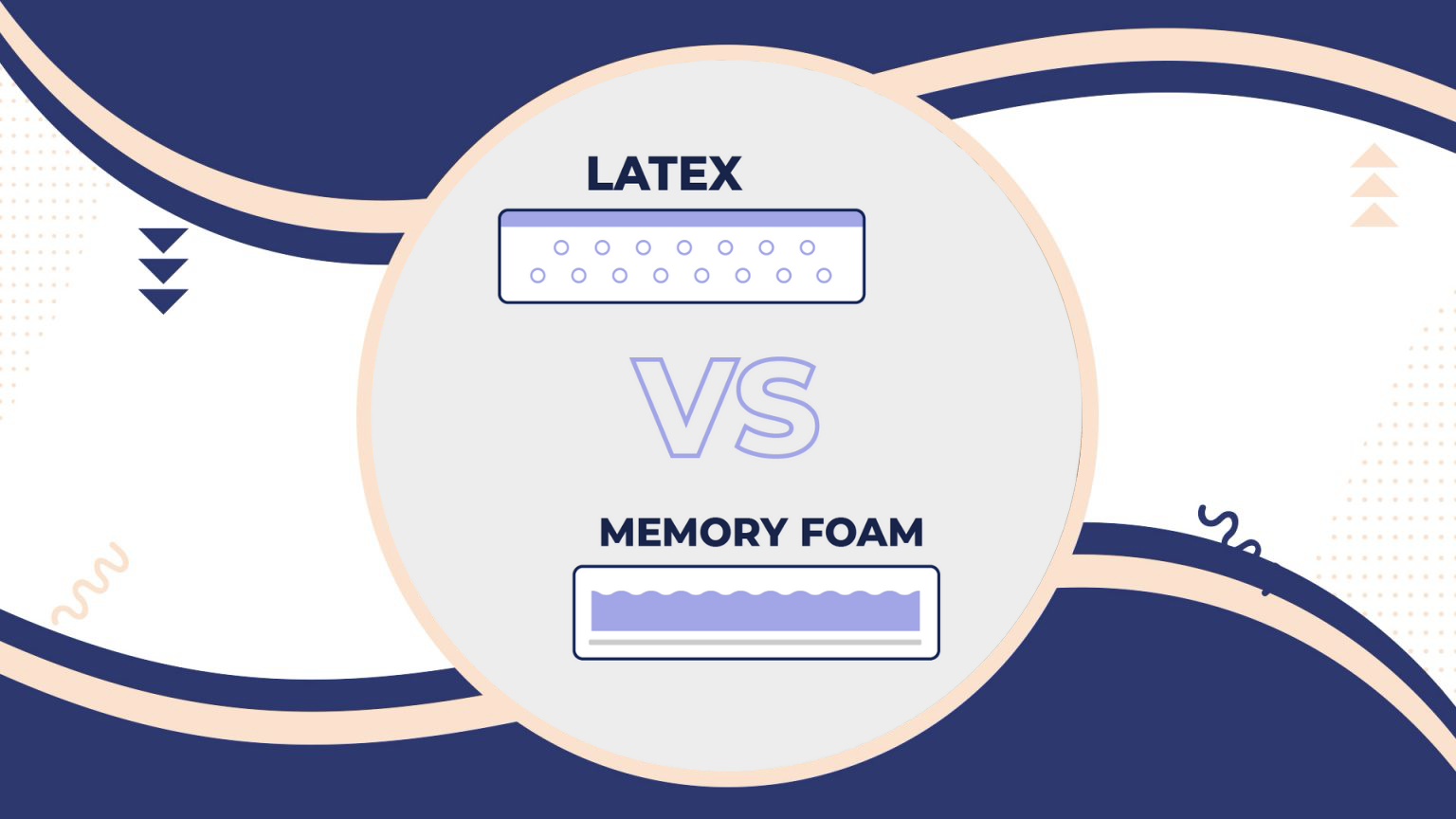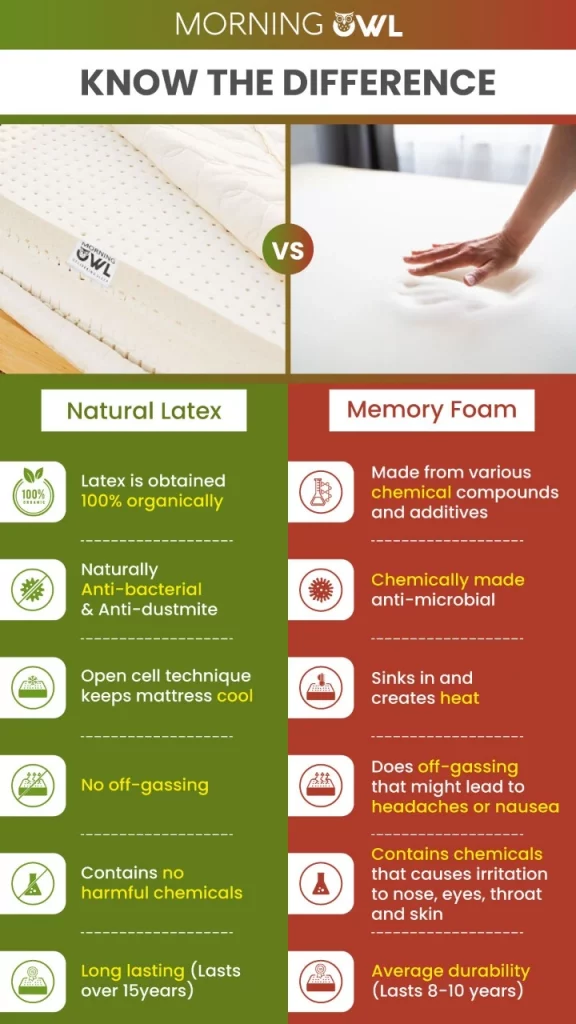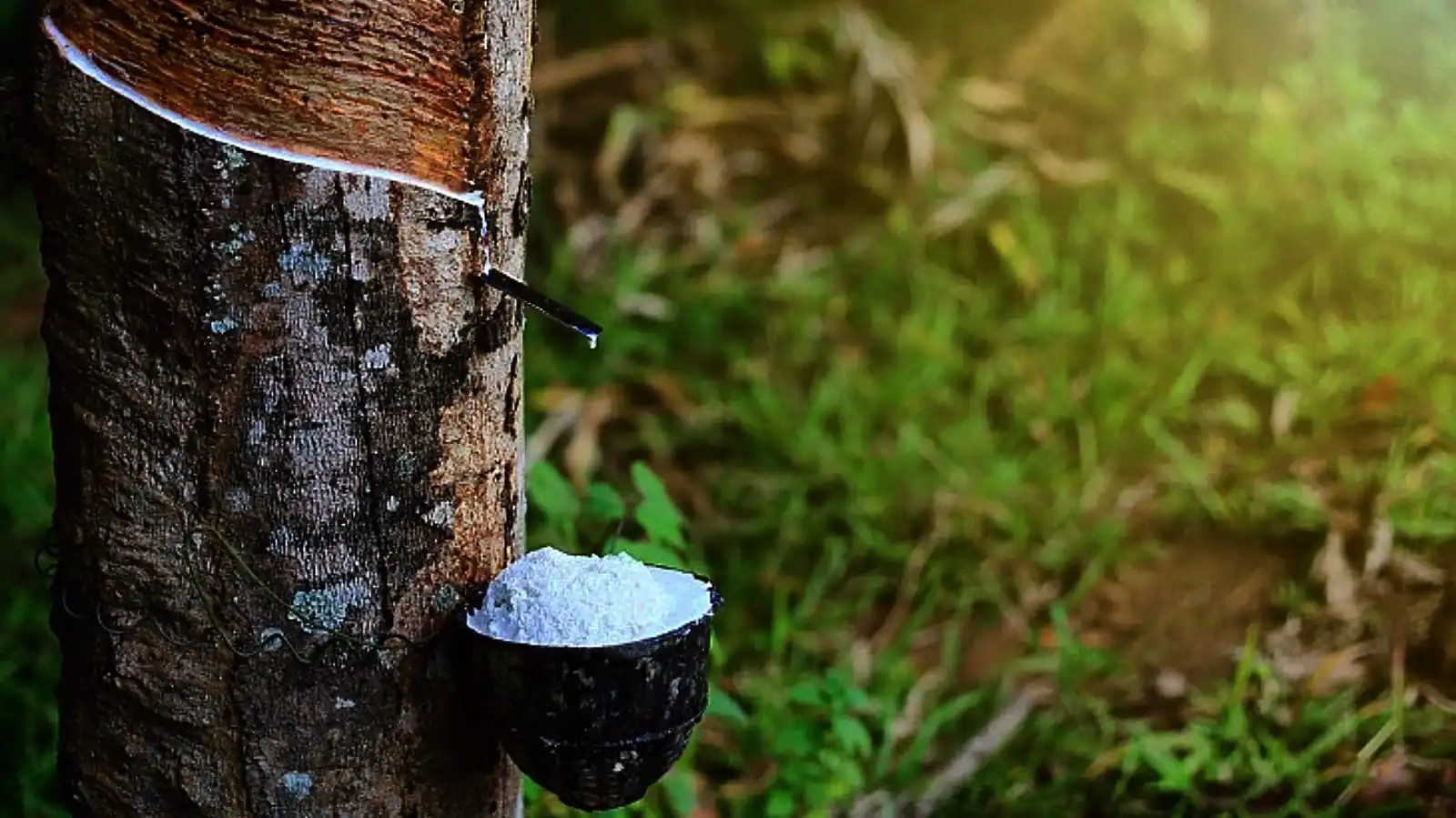
The Clash Between The Undisputed Victors: Latex Vs Memory Foam
Want to buy a latex or memory foam mattress but aren’t sure which is better? While all mattress types give appropriate posture support, there are some significant distinctions to be aware of if you’re in the market for a new mattress.
Our guide covers everything you need to know when deciding between a latex vs memory foam mattress, from advantages and downsides to cooling features and price.
Memory Foam In Brief
Memory foam is comprised of polyurethane foam and additional ingredients. It is flexible and durable, and its capacity to absorb impact has been praised. This implies that if you share a bed with someone, you won’t be able to feel them tossing and turning all night.
Memory foam is also well-known for its ability to wick away heat. The foam molds and absorbs your impact by using your body heat, resulting in a cushion that is ideal for hurting joints.
There are three different types of Memory Foam Mattresses known to mankind:
- Traditional Foam: Traditional memory foam mattresses have a closed-cell construction that retains heat and polyurethane foam that conforms to the body.
- Open-Cell Foam: Open-cell foam is made up of “open cells” that allow air to circulate throughout the mattress. It is softer and less thick than standard foam mattresses.
The Casper mattress combines open-cell foam with high-density memory foam to provide a breathable and supportive mattress.
- Foam equipped with Gel Pods: Gel pods are placed to the top layer of a gel pod foam mattress to provide additional support and comfort. These gel pods also contribute to the mattress’s bouncy sensation as compared to traditional and open-cell foam alternatives.
The Casper Wave Hybrid, for example, is designed with gel pods beneath the lower back and waist to effectively reduce aches and pains.
You can anticipate a comfortable, durable feel that provides support for hurting joints regardless of the type of memory foam mattress you pick.
It has a medium to reinforce rigidity and lasts 8–10 years on average.
It is classified as mid-tier to luxury in terms of pricing.
Latex Foam in Brief
To make a foam, the sap from the trees is frothed and baked. It’s a popular choice among people searching for an eco-friendly mattress.
Synthetic latex is manufactured from a variety of ingredients, the most notable of which is a kind of plastic and natural rubber replacement known as Styrene-Butadiene Rubber (SBR). This latex mattress is less durable and springy than an organic latex mattress.
Latex foam may be produced in two methods. The foam is created via the vulcanization process in both techniques. Vulcanization is a chemical process that uses heat to harden rubber. The two methods for producing latex foam are described here.
There are two methods to produce latex Foam:
- Talalay Method: The Talalay technique involves collecting sap from rubber plants and pouring it just partially into a mold.
To fill the rest of the mold with air, a vacuum is utilized. This foam is thought to be softer than that generated using the Dunlop technique.
- The Dunlop Method: The Dunlop method also harvests tree sap, but it fills the mattress mold. This results in a denser bottom and firmer-feeling foam than the Talalay method produces.
Regardless of the type of latex foam used, most latex mattresses are medium-firm and last 10–12 years. They are strong, springy, and bounce back quickly after being pressed. They are classified as mid-tier to luxury in terms of pricing.
Which one should you go for? Latex or Memory Foam Mattress?

Latex and memory foam differ primarily in five ways: edge support, responsiveness, breathability, motion isolation, and pressure relief. When compared to memory foam, latex foam is considered to be on the opposite end of the spectrum.
Memory foam provides superior edge support, pressure relief, and motion isolation, whereas latex foam is much more bouncy and breathable. We’ll explain why this is so below.
Side Reinforcement: If you prefer to sit or sleep on the edge of your bed, you’ll want a mattress that supports you when you press against it. A latex foam mattress provides less edge support than a memory foam mattress.
When you lie too near to the edge, latex foam may give you the sensation of rolling off.
Each mattress’ responsiveness may be checked by bouncing a golf ball (or another sort of ball) on the mattress foam. When you bounce a golf ball on a latex mattress, it will bounce back up to you.
When you bounce a golf ball on memory foam, the mattress hardly bounces back. Latex is firmer and more rubbery. When pressure is applied, it has a faster bounce-back time.
Air Circulation: Breathability is one of the numerous features that consumers look for in a mattress, especially if they sleep hot.
The mattress absorbs body heat as you sleep. Memory foam has a propensity to retain heat, increasing the likelihood that you will sleep hot.
Because latex foam does not trap heat, it will keep you much cooler while you sleep.
Response Stimulus: Each mattress’ responsiveness may be checked by bouncing a golf ball (or another sort of ball) on the mattress foam. When you bounce a golf ball on a latex mattress, it will bounce back up to you.
When you bounce a golf ball on memory foam, the mattress hardly bounces back. Latex is firmer and more rubbery. When pressure is applied, it has a faster bounce-back time.
When you apply pressure to a memory foam mattress, there is significantly less resistance and the bounce-back period is much slower.
This means that when you try to move, latex will work with you, but memory foam will work against you.
Latex foam is ideal for active sleepers since it allows you to move more readily.
Benefits and Drawbacks of a Memory Foam Mattress:
Memory foam is the best choice for pressure alleviation and motion isolation
However, it is also necessary to consider the disadvantages. If you sleep hot, a memory foam mattress might not be for you.
Benefits and Drawbacks of a Latex Mattress:
Each mattress has its own set of advantages and disadvantages. When it comes to latex, it is critical to consider both the benefits and the downsides.
Weigh each carefully before making your selection.
Synchronize your Choice:
So, how do you decide between these two mattresses? When it comes to the latex vs. memory foam mattress argument, it all boils down to the feel and features you want.
Do you want a mattress that will keep you cool if you sleep hot? Or are you seeking a mattress that can provide relief for hurting joints?
Latex foam is the ideal option for people searching for an eco-friendly mattress with greater bounce and a faster reaction time.
Memory foam is preferable for sleepers who want deep compression support, a delayed reaction time, and motion isolation.
Flat 25% OFF

Why the world is heading towards organic latex mattress? Must read!
Fri May 13 2022

The Insider Secrets to Toxic Materials in Mattress
Thu Feb 24 2022

What Are The Health Benefits You Can Avail Of By Sleeping On A Natural Latex Mattress In India?
Mon Jan 17 2022

What are the benefits of sleeping on a Soft Latex Pillow?
Mon Dec 27 2021

What Are The Different Types Of Allergies That Can Affect Your Sleep?
Tue Dec 21 2021
Related Products

Extra Firm Orthopedic Latex Mattress
Best Latex Mattress For Back Pain | 7.5 Firmness On Scale Of 1-10 | Ideal For Heavy Weight Person | Single Solid Latex Foam Layer

Medium Firm Natural Latex Mattress
Best Natural Latex Mattress In India | 6.5 Firmness On Scale Of 1-10 | Available In 4 & 6 Inches | Single Solid Latex Foam Layer

Soft Luxurious Natural Latex Mattress
Top Luxurious Mattress In India | 5 To 6 Firmness On Scale Of 1-10 | Reversible Mattress | One Side Soft & Other Medium Firm | Solid 8 Inches Latex Layer

Natural Latex Mattresss Toppers
Soft & Firm Topper Option | Available In 2 Inches Thickness | Custom Size Option | Certified 100% Natural Latex


